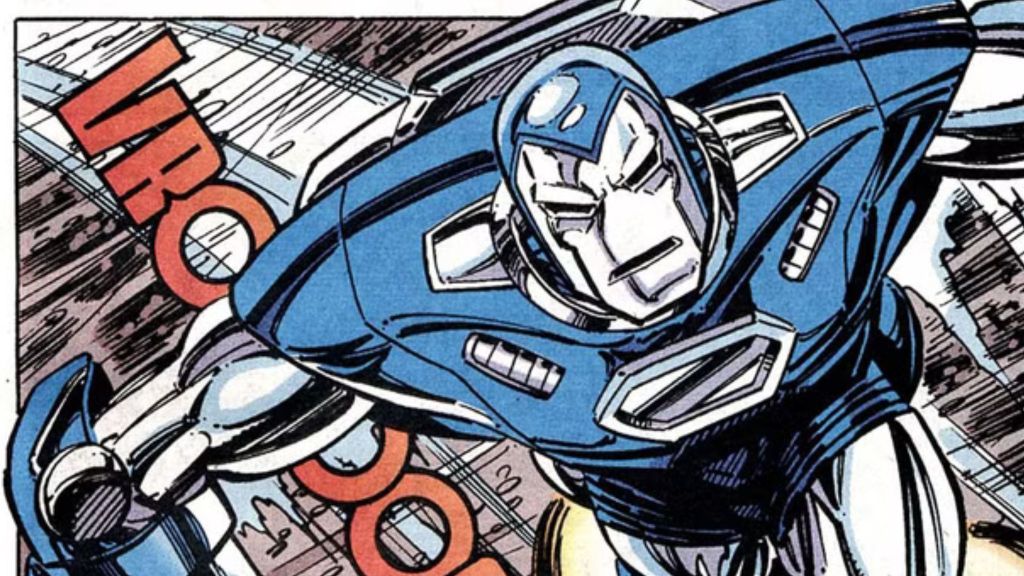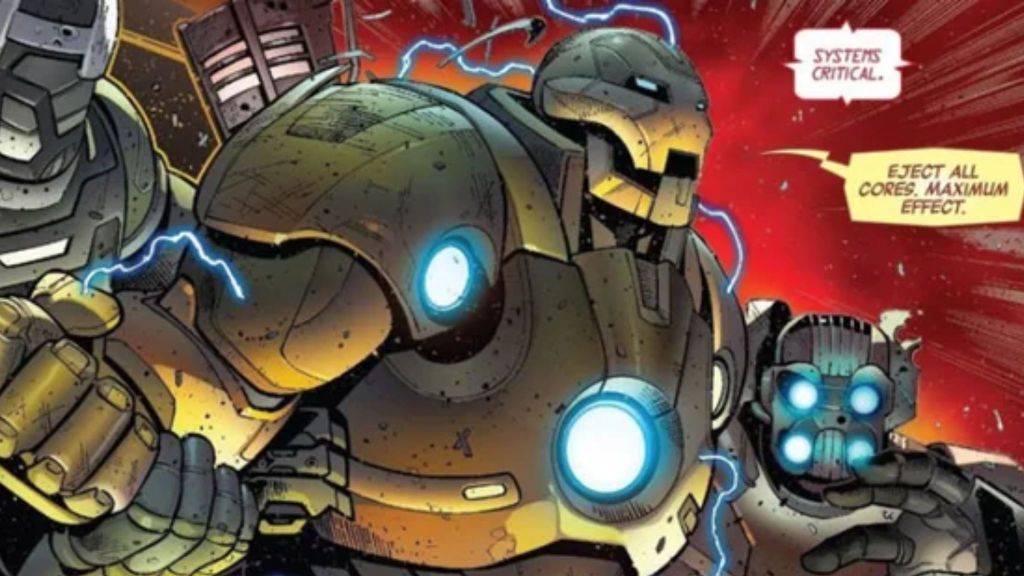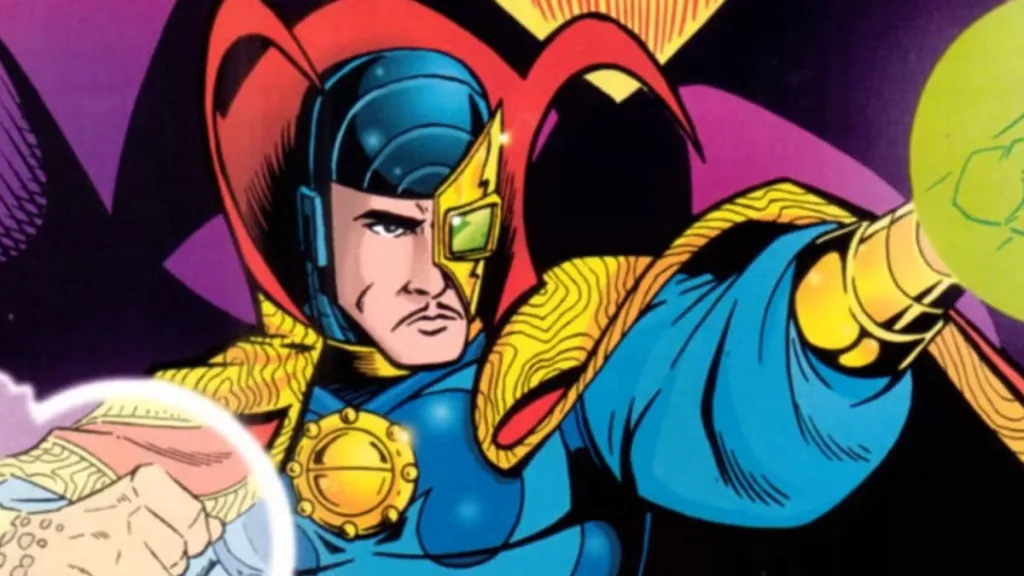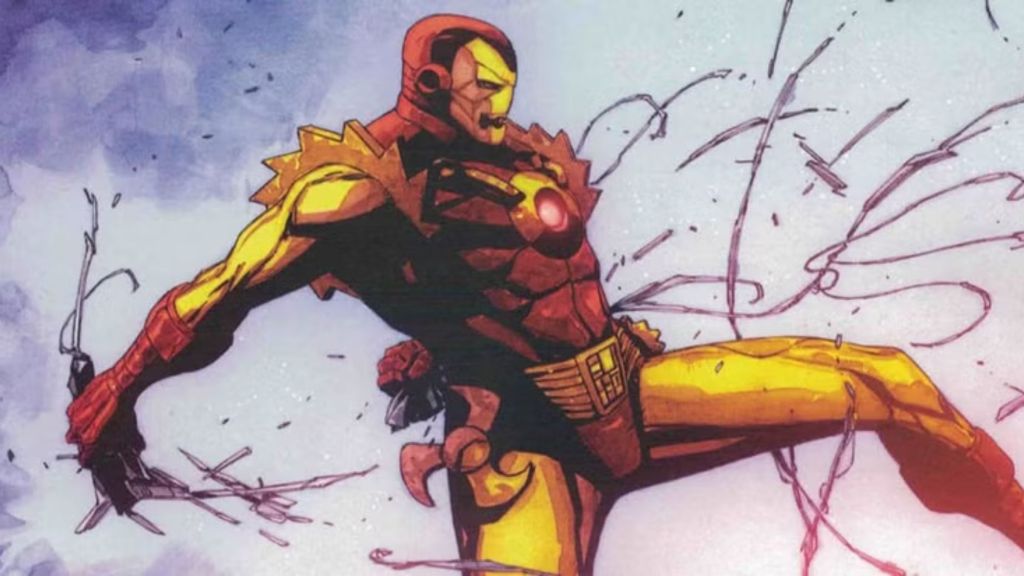Comics let creators bend reality, dabble in magic, and throw Tony into any era or dimension. The MCU, however, needs internal consistency — a world where Iron Man is still Iron Man. These eccentric suits are masterpieces of comic-book creativity, but on film, they’d risk derailing tone, power levels, and audience believability. Some armors belong in the pages, not the theaters, and that’s okay.
After all, even Tony Stark can’t out-engineer style. Here’s a look at six of Tony’s strangest suits that are just too weird for the MCU to ever fully embrace.
7. The Arctic Armor

The Arctic Armor, debuting in Iron Man #318 (1995), is exactly what it sounds like: a highly specialized suit built solely for freezing environments. It’s heavily insulated, equipped with ice‑repelling systems, thermal regulation, and anti‑frost units — basically a personal heater with repulsors. The problem isn’t that Tony prepared for environmental extremes — he’s supposed to be over-prepared — it’s that this particular armor feels like the definition of over‑engineering for a narrative excuse.
From a logical standpoint, the Arctic Armor undermines one of Iron Man’s biggest narrative advantages: his suits are modular and adaptable. By the time Tony’s tech reached even mid‑tier armor like the Silver Centurion, he didn’t need to design environment‑specific models. His later suits — and certainly MCU versions — already handle space, deep‑sea, and extreme‑temperature scenarios with onboard environmental stabilizers. Making a whole new armor just for cold weather feels like regression rather than innovation.
6. The Godkiller Armor

Probably the most overpowered armor Tony ever touched (well, remotely controlled). The Godkiller Armor, introduced in Iron Man (Vol. 5) #12 (2013), isn’t just a suit — it’s a Star Wars-sized mecha, created by an ancient alien race to fight gods. It’s the size of a small moon and can wipe out entire armies of celestials. As epic as it sounds, there’s no way to put this in the MCU without breaking its scale. It’s not “Iron Man’s armor” anymore — it’s a cosmic war machine that makes Galactus look like a side character. In a live-action movie, it would either overshadow every other hero or force a power-level reset for the universe. Cool? Absolutely. Cinematically plausible? Not even close.
5. The Stealth Armor (Mark V)

The Stealth Armor, first appearing in Iron Man #152 (1981), is built for espionage. Instead of bright colors or repulsor blasts, it’s matte-black, radar-invisible, and designed for infiltration over destruction. It forgoes heavy weapons for silence and subtlety — the opposite of what movie audiences expect from Tony Stark. While the comic version made sense for Cold War-era spy plots, it doesn’t scream “blockbuster spectacle.” The MCU already flirts with stealth tech through suits like the Mark VII or Spider-Man’s stealth suits, but a full film centered around Tony sneaking around quietly wouldn’t deliver those iconic flight scenes or repulsor fireworks. It’s too practical to be cinematic — a rare complaint for Iron Man gear.
4. The Thorbuster Armor

Tony created the Thorbuster in Iron Man (Vol. 3) #64 (2003), powered by an Asgardian crystal Thor gifted him. The suit was designed as a contingency plan, should the God of Thunder ever go rogue. It’s essentially Hulkbuster 2.0 — but divine. From a storytelling perspective, it’s a rich idea — Tony’s paranoia and need for control made manifest. But cinematically, it’s messy. The MCU already explored that tension between science and gods through the Avengers’ early conflicts; building a literal “anti-Thor suit” would make Tony look more hypocritical than heroic. And visually? That shimmering, rune-crusted suit powered by alien crystal tech feels more like a Final Fantasy crossover than Marvel’s grounded aesthetic.
3. Iron Man “Sorcerer Supreme” Armor

This wild fusion from What If? #113 (1998) imagines Tony Stark as the Sorcerer Supreme, blending technology and magic. The armor floats using spells, channels arcane energy through engineered gauntlets, and wears an artificial Cloak of Levitation. Basically, it’s what you get if Doctor Strange hacked Stark’s nanotech. While the MCU has dabbled in science-meets-magic through Doctor Strange and Scarlet Witch, this concept totally blurs the boundary that the films carefully maintain. Tony’s genius thrives on logic — if he started casting spells, his whole character arc would lose meaning. Watching him chant in technobabble while projecting sigils from an arc reactor? Ridiculous on screen.
2. Iron Man 2020 (Arno Stark)

Arno Stark, Tony’s alternate-future cousin, dons this armor in Machine Man #2 (1984). It’s heavily industrial, lined with gigantic golden gears — the comic’s attempt to imagine what “futurism” would look like in the year 2020 (spoiler: it aged terribly). Arno is also more of a corporate weapon dealer than a hero, using the armor for profit rather than protection. This armor’s problem isn’t just its dated design — it’s tonally off from everything the MCU stands for. The movies position Iron Man as redemption through innovation. Arno’s version is capitalism in overdrive: profit-driven, cynical, and ethically detached. With its cheesy 80s “gear motifs” and villainous flair, this armor would look absurd next to the sleek nanotech designs of MCU Phase 3 and 4.
1. Space Armor MK III

Unveiled in Iron Man (Vol. 5) #5 (2013), the Space Armor MK III is basically a personal spaceship. Designed for interstellar travel, it’s loaded with oxygen recyclers, cosmic thrusters, and long‑range comms to explore alien systems. This armor propels Tony from inventor to astronaut-philosopher — a leap MCU Tony never takes. It shifts the tone from techno‑realism to cosmic opera. Visually cluttered and thematically expansive, it would feel foreign in a universe where Iron Man’s brilliance is still tied to Earthbound problems. It’s not un‑cool; it’s just too cosmic for a character whose greatest battles were internal, not interstellar.
What do you think? Let us know in the comments!







